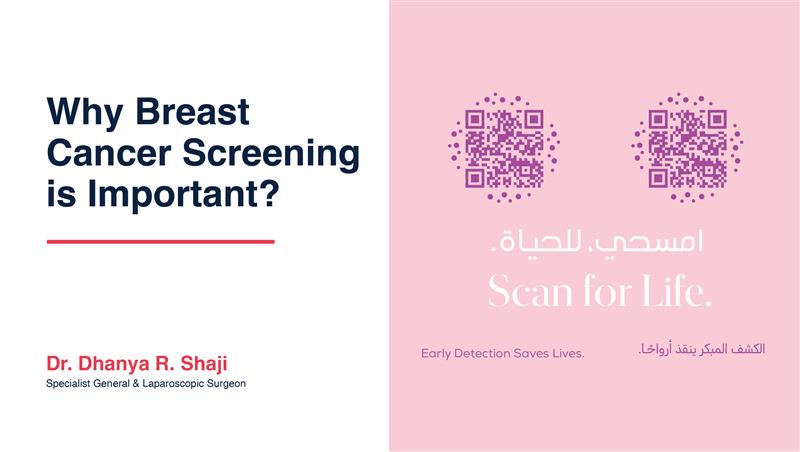We present the case of a 38-year-old female patient who visited the Plastic Surgery Clinic requesting breast reconstruction on the right side. The patient reported finding a lump in her right breast two months ago and opted for screening and mammography. She was initially evaluated by a breast surgeon, who performed additional tests and a mammogram. The lump was asymptomatic but had been growing in size over the past two months.
Encounter with the Surgeon
The patient was otherwise fit and had no prior medical or surgical history. She was a non-smoker with no significant family history of any cancer, including breast cancer. Her only history was a C-section performed for the birth of her only child 10 years ago.
On Examination: She was of normal weight and height with a BMI of 22. She has small breasts with grade 2 ptosis and wears a size 34C bra. There is a hard, non-mobile lump in the upper outer quadrant of the breast. The skin is free and easily pinchable, separate from the lump. The nipple-areola complex is normal with no discharge. The lump measures 2 x 3.5 cm and is non-painful. There are no palpable lymph nodes in the axilla or neck. The breast skin quality is moderate with minimal stretch marks. The patient lacks significant adipose tissue or loose skin on the abdomen. The left breast is symmetrical in shape, volume, and size, with no abnormalities.
First Assessment
Based on the mammography findings, a decision was made to perform a biopsy of the lump in the right breast. The biopsy result revealed ductal invasive carcinoma of the right breast. Further testing with PET and MRI scans showed no metastatic disease elsewhere in the body. The case was discussed in a multidisciplinary team (MDT) meeting with an oncologist, onco-surgeon, plastic surgeon, radiologist, pathologist, radiation oncologist, and other members present.
The Plan
Given the young age of the patient and the diagnosis of invasive ductal carcinoma with aggressive features, a decision was made for neoadjuvant chemotherapy followed by skin-sparing mastectomy with sentinel lymph node biopsy (SLNB) and immediate tissue expander placement for staged reconstruction. A backup plan of axillary lymph node dissection was prepared in case of a positive SLNB report on frozen section. The patient and her family were involved in the treatment planning and were thoroughly informed about the management options. The patient agreed to the treatment plan.
Evaluation before Surgery
Following a comprehensive assessment by the anesthesiology team, additional screening tests were performed, which were within normal limits. A port-a-cath was inserted in the left subclavian vein for chemotherapy under the supervision of a vascular surgeon. The patient completed the entire cycle of neoadjuvant chemotherapy without major issues. A full set of repeat screening and diagnostic tests was performed. The PET scan showed a significant decrease in the lump size, with no other lesions or metastasis. Surgery was planned for three weeks later.
First Surgery
A skin-sparing mastectomy was initiated by the oncosurgeon using a radial central incision on the breast, with excision of all breast tissue including the nipple-areola complex. SLNB using radioactive gamma camera and blue dye was performed. The first largest lymph node with blue staining was excised in the axilla. The frozen section report of the lymph node was negative, so complete axillary lymph node dissection was unnecessary. The frozen section also confirmed clear cancer margins in the mastectomy specimen, with no further excision needed. A 350 cc tissue expander was placed in a submuscular plane under the pectoralis major muscle. The lower half of the tissue expander was covered with the serratus anterior muscle fascia. The expander was initially inflated with 150 cc of normal saline. The skin was closed without tension in multiple layers over a silicone 15 French suction drain. The patient tolerated the surgery well and was moved to recovery in a stable, pain-free condition. The patient spent the following day in the hospital and was discharged home with a plan for regular follow-ups every 3 to 5 days until complete wound healing.
Radiation Treatment
Following wound healing, completed four weeks post-surgery, the patient underwent a full cycle of radiation therapy. She had an uneventful post-operative course and successfully completed radiation therapy, though there were significant skin changes and minor ulcerations on the right chest skin. The expander had a second-degree capsular contracture and had migrated superiorly on the right chest. The patient reported sensitivity, pain, and stiffness in the right chest and shoulder, attributed to radiation therapy. After eight weeks of conservative management with skin ointments and supportive therapy, the patient was scheduled for tissue expander expansion with the plastic surgeon. She visited weekly for six weeks to achieve regular saline expansion of the tissue expander. Once adequate size and volume of the tissue expander were reached, the breasts achieved good symmetry and volume. A decision was made to proceed with the next stage of reconstruction by replacing the tissue expander with a silicone implant. Surgery was planned two weeks later.
Second Surgery
A final set of pre-operative screening tests was performed, and fitness was confirmed by the anesthesiology team. The patient underwent the final reconstructive surgery led by Dr. Abizer Kapadia. During surgery, the tissue expander was removed. The pocket for the breast silicone implant was revised, and a 340 cc silicone implant, matching the left breast, was inserted in the same submuscular plane. The lower part of the implant was covered with acellular dermal matrix (ADM) mesh and sutured to the lower border of the pectoralis major muscle and the inframammary fold. The skin was closed without tension in multiple layers over a 15 French silicone drain. The patient tolerated the surgery well and was moved to recovery in stable, pain-free condition. The patient spent one night in the hospital and was discharged home in a healthy condition.
Post-Operative Care
The patient had an uneventful recovery. Regular dressing changes were performed until complete wound healing within three weeks. The patient achieved a successful outcome, with symmetry, volume, and size comparable to the left breast. She expressed satisfaction with the reconstructive result, with no complaints of pain, stiffness, or other issues following complete healing. After nine months of comprehensive care and treatment, she resumed a normal life with her family without further issues. She expressed gratitude to the entire team for her breast cancer and reconstruction treatment. The patient continued follow-ups every six months for two years to monitor the breast cancer and reconstruction status.
Conclusion
This case highlights the importance of holistic, compassionate, and comprehensive management of breast cancer in a young, healthy woman. The multidisciplinary team played a crucial role in the complete management of the patient, focusing on cancer removal and patient cure. This case also underscores the value of successful breast reconstruction. Breast reconstruction surgery empowers women, allowing them to lead normal lives without the stigma or loss associated with mastectomy. Reconstruction helps retain femininity and psychological well-being. Breast cancer cases should be managed with a holistic approach and a positive outlook on breast reconstruction.
Take-Home Points
- Early screening and diagnosis of breast cancer should be a goal for every woman.
- A professional multidisciplinary team (MDT) is essential for optimal care.
- Breast cancer treatment and reconstruction go hand-in-hand and are equally important.
- Breast reconstruction empowers women, preserving femininity and self-confidence, enabling them to live a healthy life without stigma.































